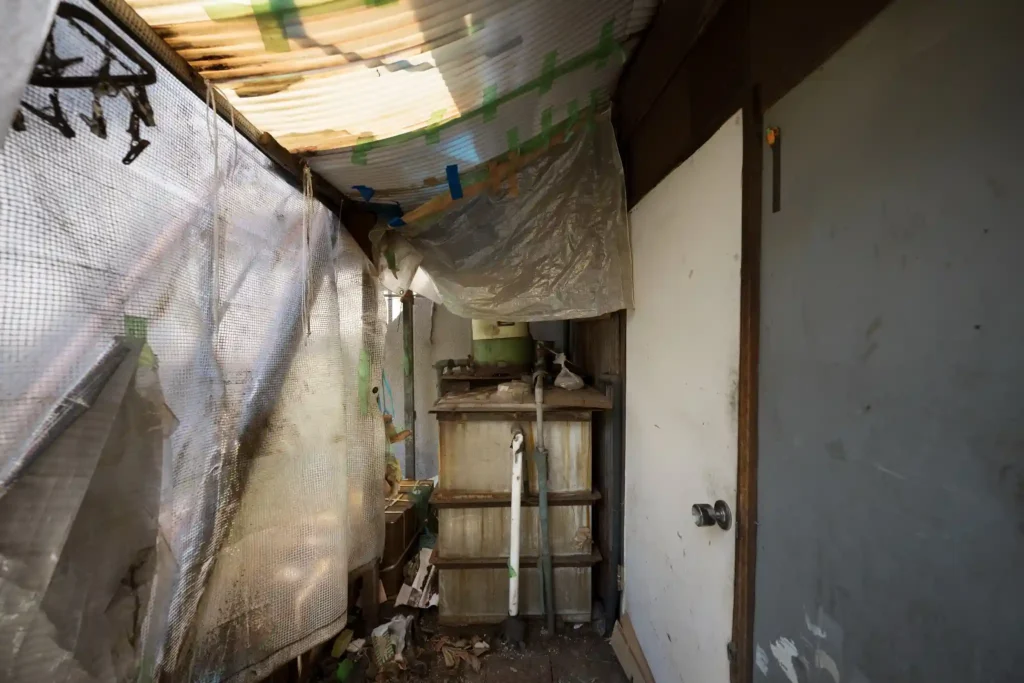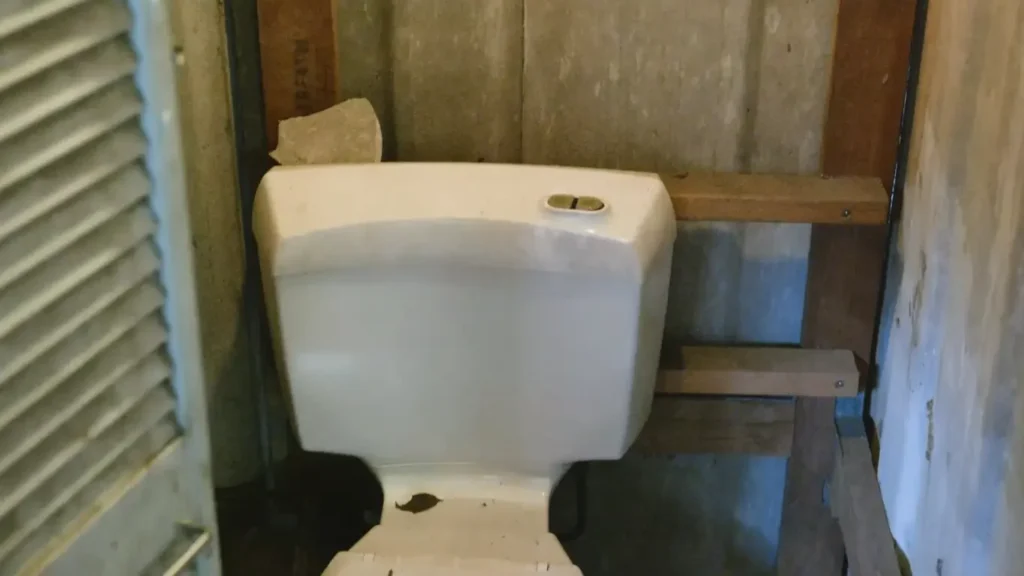A house built in 1976 could contain asbestos, as asbestos was widely used in building materials in the United States and many other countries until the late 1970s. Common applications include insulation, roofing materials, ceiling and floor tiles, siding, and joint compounds. This post will discuss whether a House built in 1976 has Asbestos.
While its use began declining after the dangers of asbestos exposure became widely recognized, some materials containing asbestos were still in use during this period. Suppose you suspect asbestos in a 1976 house. In that case, it’s essential to have the materials tested by a professional before undertaking renovations or repairs, as disturbing asbestos-containing materials can release harmful fibers into the air.
Here is a detailed table on asbestos usage in houses by year built:
| Year Built | Asbestos Likelihood | Common Asbestos Materials |
|---|---|---|
| 1960 | High (widely used in insulation, flooring, siding, etc.) | Insulation, flooring, roofing, siding |
| 1970 | High (common in popcorn ceilings, drywall, and adhesives) | Popcorn ceilings, drywall, vinyl tiles |
| 1974 | High (common in construction materials like cement and tiles) | Cement boards, siding, pipe insulation |
| 1975 | High (used in many building materials, including insulation) | Insulation, adhesives, textured ceilings |
| 1976 | Moderate to High (declining but still present in materials) | Popcorn ceilings, vinyl flooring, mastic |
| 1982 | Moderate (phased out in most products but still used in some) | Roofing, siding, adhesives, pipe insulation |
| 1985 | Low to Moderate (rarely used except in specific materials) | Some roofing, flooring, and cement products |
| 1988 | Low (mostly banned, limited use in older stock materials) | Minimal use, rare in common residential materials |
This table summarizes the likelihood of asbestos presence and the materials in which it was commonly used for homes built in the respective years. Let me know if you need further details!
Would a house built in 1982 have Asbestos?

A house built in 1982 could have asbestos-containing materials, depending on the construction practices and local regulations. Here are some key considerations on whether a house built in 1982 would have asbestos:
- Regulations:
- In many countries, the use of asbestos in construction materials started to decline significantly in the late 1970s, and stricter regulations were implemented in the 1980s.
- In the United States, for example, the EPA issued a partial ban on certain asbestos products in 1973, and further restrictions were introduced in the 1980s. However, asbestos was not fully banned in many products.
- Potential Asbestos-Containing Materials:
- Flooring: Vinyl floor tiles and their adhesives often contain asbestos.
- Popcorn Ceilings: Many textured ceiling coatings (acoustic ceilings) contained asbestos until the early 1980s.
- Insulation: Some attic and wall insulation, particularly vermiculite, could contain asbestos.
- Cement Products: Asbestos was sometimes used in siding, roofing shingles, and pipes.
- Drywall and Joint Compound: Joint compounds used to seal drywall seams could contain asbestos.
- Location and Renovation History:
- The likelihood of asbestos presence depends on the country or region and whether the house has undergone renovations that may have replaced older materials.
How to Be Sure:
- Professional Testing: The only way to confirm the presence of asbestos is to have a certified professional take samples and analyze them in a lab.
- Don’t Disturb: If you suspect asbestos, avoid disturbing the material, as asbestos fibers are hazardous when inhaled.
If you’re planning renovations or repairs, addressing the potential for asbestos beforehand is essential to ensure safety.
When did asbestos stop being used in houses?
The use of asbestos in residential construction materials varied by country and region, but here are some general timelines for when asbestos use began to decline or stopped being used in homes:
United States
- 1970s: The Environmental Protection Agency (EPA) and the Occupational Safety and Health Administration (OSHA) began regulating asbestos. The EPA issued a ban on spray-applied asbestos products in 1973.
- The 1980s: The use of asbestos in many residential building materials sharply declined due to increased awareness of health risks and stricter regulations.
- Some products, like asbestos-containing insulation and textured ceilings, were phased out in the early 1980s.
- However, asbestos was still used in certain construction materials, like roofing shingles and cement boards, until the late 1980s and even into the 1990s.
- 1990s: Most asbestos-containing products were no longer manufactured for residential use, though it was not completely banned.
Canada
- 1970s-1990s: Asbestos use in residential construction materials declined significantly starting in the late 1970s. By the early 1990s, its use was minimal.
- 2018: Canada implemented a full ban on asbestos and asbestos-containing products.
United Kingdom
- 1985: Asbestos use in most building materials was banned.
- 1999: Complete ban on the use of asbestos in all products.
Australia
- 1980s: Residential use of asbestos began to decline significantly.
- 2003: A nationwide ban on importing, selling, and using asbestos and asbestos-containing products.
Other Countries
In many developing countries, asbestos use persisted well into the 2000s and is still used in some places due to a lack of regulations.
Key Takeaways
- In the United States, homes built before 1980 are most likely to contain asbestos. However, homes constructed into the early 1990s may also have some asbestos-containing materials.
- The timeline can vary in other countries, but the mid-to-late 1980s is a common cutoff for most developed regions.
If you’re unsure, testing by a certified professional is the best way to confirm the presence of asbestos.
1970s linoleum flooring Asbestos

Linoleum flooring from the 1970s may or may not contain asbestos, as true linoleum and vinyl flooring are often confused. It’s important to distinguish between the two:
1. True Linoleum Flooring
- Linoleum is made from natural materials like linseed oil, cork dust, and wood flour, and it does not inherently contain asbestos.
- However, linoleum flooring installed in the 1970s might have been backed with materials (like felt) that contained asbestos, especially if it was reinforced for durability.
2. Vinyl Flooring
- Vinyl sheet flooring and vinyl tiles were commonly used in the 1970s and frequently contained asbestos in two places:
- The Vinyl Itself: Asbestos was added to improve strength and fire resistance.
- Adhesive/Mastic: The glue used to install the flooring often contained asbestos.
How to Identify 1970s Flooring with Asbestos
- Appearance: Older vinyl sheet flooring might have felt backing that contains asbestos.
- Patterns: Asbestos-containing flooring often came in 9″x9″ or 12″x12″ tiles, but sheet vinyl was also common.
- Testing: Visual inspection is not enough. A professional asbestos test is required to confirm.
Risks
- Asbestos in flooring is considered non-friable, meaning the fibers are bound in the material and less likely to become airborne unless disturbed by cutting, sanding, or damage.
- If you suspect asbestos, avoid disturbing the material until it is tested.
What to Do
- Leave It Alone: Asbestos flooring does not pose a health risk if undisturbed.
- Test: Hire a certified professional to take samples and test the material.
- Removal: If asbestos is confirmed and you plan renovations, hire a licensed asbestos abatement contractor to remove the flooring safely.
Always take precautions when dealing with older flooring to protect yourself and others from potential asbestos exposure.
FAQS
was asbestos used in 1920s houses?
Yes, asbestos was commonly used in houses built in the 1920s. It was widely included in insulation, roofing materials, siding, flooring, and plaster due to its fireproof and durable properties. However, if disturbed, its use poses health risks, so caution is advised when renovating older homes.
Was asbestos used in popcorn ceilings in 1977?
Yes, asbestos was commonly used in popcorn ceilings in 1977. It was added to the textured material for fire resistance and durability. Asbestos in popcorn ceilings was widespread until the late 1970s when its use began to decline due to health concerns and increasing regulations. If you suspect a popcorn ceiling from 1977 contains asbestos, it should be tested by a certified professional before any removal or disturbance.
Was asbestos used in plaster in the 1920s?
Yes, asbestos was sometimes used in plaster in the 1920s, particularly in fire-resistant and durable applications. It was added to some plaster products to improve insulation and fireproofing. If you’re working with or renovating a house from the 1920s, it’s wise to have the plaster tested for asbestos before disturbing it, as asbestos fibers can become hazardous when airborne.
Would a house built in 1960 have asbestos?
Yes, a house built in 1960 could contain asbestos.
Request a Free Quote
Want to Connect us and Get a Free Quote
Email: [email protected]
Phone Number: +1 714-600-1480
Address: 2011 Hout Rd, Mansfield, OH 44905, United States

Dr. William Pitman is a leading researcher and one of the foremost experts in asbestos testing and removal. With decades of experience in environmental science and public health, Dr. Pitman has dedicated his career to ensuring safe and effective asbestos abatement practices. His groundbreaking research has set industry standards for asbestos testing methodologies, helping to protect countless individuals from hazardous exposure. A sought-after consultant and speaker, Dr. Pitman combines scientific precision with practical expertise, making him a trusted authority in his field.
